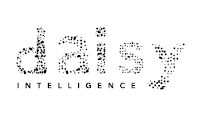
How Insurance Companies Can Start to Battle Fraud with AI
 Daisy Intelligence
Daisy Intelligence
He’s a journalist working undercover to investigate a drug ring, but his disguise as a beach bum is too good.
Seemingly out of nowhere, he’s offered $50,000 to kill a rich businessman — in the hopes that his wife, by committing insurance fraud, can get a huge windfall.
The premise of Fletch, the 1985 movie starring Chevy Chase, is typical in the way that it makes insurance fraud seem like a dramatic adventure. Double Indemnity, The Thomas Crowne Affair, and many others follow a similar plotline.
If, however, you multiplied such cases by an order of magnitude and intertwined in the complexity associated with insurance fraud in specific areas like health care or property and casualty, it becomes far less entertaining. It just becomes costly, error-prone and bad for business.
According to data from the Insurance Information Institute, property/casualty fraud losses were $30 billion a year between 2013 and 2017. The FBI says fraud, both private and public, accounts for 3% to 10% of total healthcare expenditures.
In response, dozens of U.S. state governments have established anti-fraud bureaus, while many providers are creating Special Investigative Units internally.
It comes as news to no one within the insurance community that technologies like artificial intelligence (AI) can battle fraud.
What may be less well known, however, is the specific approach that could not only help them fight fraud but win.
Step One: Choose the Right AI
In its State Of Insurance Fraud Technology report, 90% of insurers using technology told the Coalition Against Insurance Fraud they are mostly relying on automated red flags or business rules to detect fraud, and more than half employ predictive modeling.
AI based on reinforcement learning, on the other hand, transcends the limitations of predictive analytics by working without human intervention to conduct trial-and-error experiments with a vast number of possible scenarios. Reinforcement learning improves over time to deliver better and more accurate results.
Daisy has worked with clients that have used our AI based on reinforcement learning technology to lower false-positives from more than 90% to less than 50%. In some cases, we’ve reduced false-positive rates to less than 20%. It means that investigators can focus on the most suspicious activity.
Step Two: Bring Together the Right Team
Investing in technology to combat fraud may begin with Claims, SIU/audit and Underwriting but the business implications require other stakeholders to be involved throughout the process.
This includes investigators with domain expertise who can provide insight into specialized behavior models that help AI identify fraud more quickly than more generic ones.
As important, senior leadership team members such as the CTO, CIO, and VP, Risk need to be engaged and champion the technology.
A project would launch having a senior executive as the lead sponsor who oversees fraud costs tied to corporate profitability and shareholder value and plan quality. Then, end users such as SIU/Internal Audit and IT will get involved.
Step Three: Get Ahead of Change Management
As with almost every other sector where AI holds promise, the question on most employee’s lips remain the same: “What does this mean for my job?”
The reality is that advanced technologies are likely to shift many roles rather than replace them. According to O*NET OnLine, a service of the U.S. Department of Labor, job growth for fraud examiners and investigators is expected to climb 10% and 14% through 2026.
That said, it is important to review your existing processes and talk with staff early about how their work will change and where they will focus their time and expertise.
A number of large insurers are already doing this: Insurance Business magazine recently reported that Allstate has committed $40-million to train employees to work within an AI-driven environment.
Step Four: Determine Your Success Metrics
Reducing fraud overall and abusive behavior are the key objectives, but there are a number of other ways that AI can align with an insurance company’s key performance indicators.
As you evaluate the right technology and services, consider the impact it could have on areas such as:
- Investigator efficiency
- The ability to undercover more complex or organized fraud activity
- More consistent claims investigations
- Increased mitigation of losses
- Improve customer acquisition by being able to quickly assess risk and provide prices.
- Claims automation to improve efficiency and customer happiness.
Step Five: Select A Partner That Will Serve as A Long-Term Trusted Advisor
Insurance companies don’t always have the IT resources to stay on top of every new technology development or the ways in which AI will evolve over time.
It is important to establish a relationship with a company offering the right technology that has an established track record in insurance, and the ability to draw upon experience with other insurance customers.
To learn more about how Daisy Intelligence is transforming fraud detection in insurance, drop us a note or download our free eBook that puts the spotlight on four key fraud trends.




